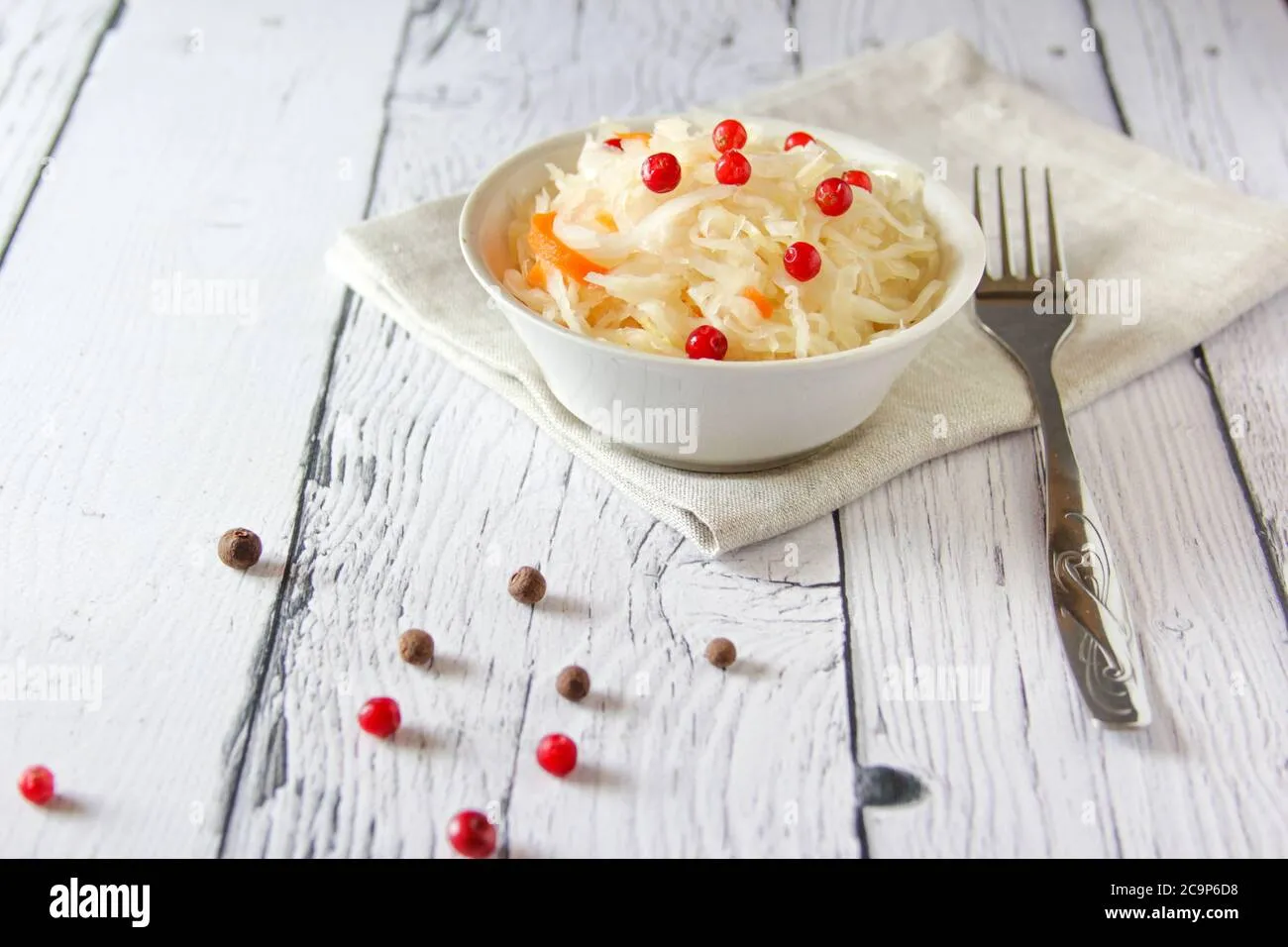Get ready to transform ordinary cabbage into a culinary masterpiece that will tantalize your taste buds and impress your dinner guests! This isn't just another boring sauerkraut recipe - this is a vibrant, cranberry-infused fermentation adventure that brings together traditional German techniques with a modern twist. Imagine a condiment that's not only packed with probiotics but bursts with a perfect balance of tartness, crunch, and unexpected fruity notes. Whether you're a fermentation enthusiast or a curious home cook, this Cabbage and Cranberry Sauerkraut will elevate your culinary skills and add a gourmet touch to your meals.
Prep Time: 20 mins
Cook Time: -
Total Time: 20 mins
Cuisine: German
Serves: 6 servings
Ingredients
- 1 head green cabbage, shredded
- 1 cup fresh cranberries
- 1 tablespoon salt
- 1 tablespoon caraway seeds
- 1/2 cup water
Instructions
- Thoroughly wash the green cabbage and remove any outer damaged leaves. Using a sharp knife or mandoline, carefully shred the cabbage into thin, uniform strips.
- Rinse the fresh cranberries and pat them dry with a clean kitchen towel. Roughly chop the cranberries to help release their juices and integrate more evenly with the cabbage.
- In a large mixing bowl, combine the shredded cabbage, chopped cranberries, salt, and caraway seeds. Using clean hands, massage and squeeze the mixture thoroughly to break down the cabbage's cellular structure and release natural moisture.
- Continue massaging for 5-10 minutes until the cabbage starts to release its liquid and becomes slightly wilted. The salt will help draw out additional moisture from the vegetables.
- Transfer the cabbage and cranberry mixture into a clean, sterilized glass jar, pressing down firmly to eliminate air pockets. Pour the additional water over the mixture to ensure all ingredients are submerged.
- Cover the jar with a clean cloth or loose lid, allowing fermentation gases to escape. Place the jar in a cool, dark location at room temperature (around 60-70°F).
- Let the sauerkraut ferment for 7-10 days, checking periodically and pressing down the mixture to keep it submerged. Taste after a week to determine desired tanginess.
- Once fermentation is complete, seal the jar and store in the refrigerator. The sauerkraut will continue to develop flavor and can be enjoyed for several weeks.
Tips
- Use the freshest cabbage possible - crisp, firm heads will yield the best texture and flavor.
- Ensure all your equipment is thoroughly cleaned and sterilized to prevent unwanted bacterial growth.
- Be patient during the massaging process - this step is crucial for breaking down the cabbage and releasing natural juices.
- Keep the sauerkraut consistently submerged in liquid to prevent mold and ensure proper fermentation.
- Room temperature is key: maintain a steady 60-70°F environment for optimal fermentation.
- Trust your senses: if the sauerkraut smells fresh and tangy, it's good. Any off or rotten smell means discard.
- Use clean hands or a sterilized utensil when pressing down the mixture during fermentation.
- Experiment with additional spices like juniper berries or dill to customize your sauerkraut flavor profile.
Nutrition Facts
Calories: 40kcal
Carbohydrates: 9g
Protein: 2g
Fat: g
Saturated Fat: 0g
Cholesterol: 0mg

